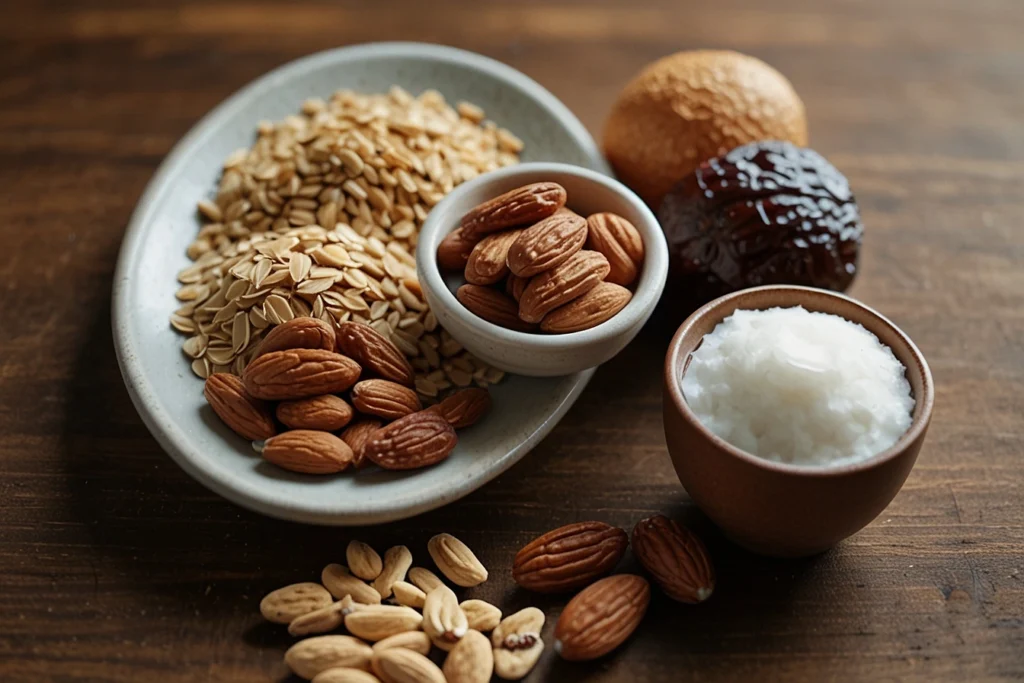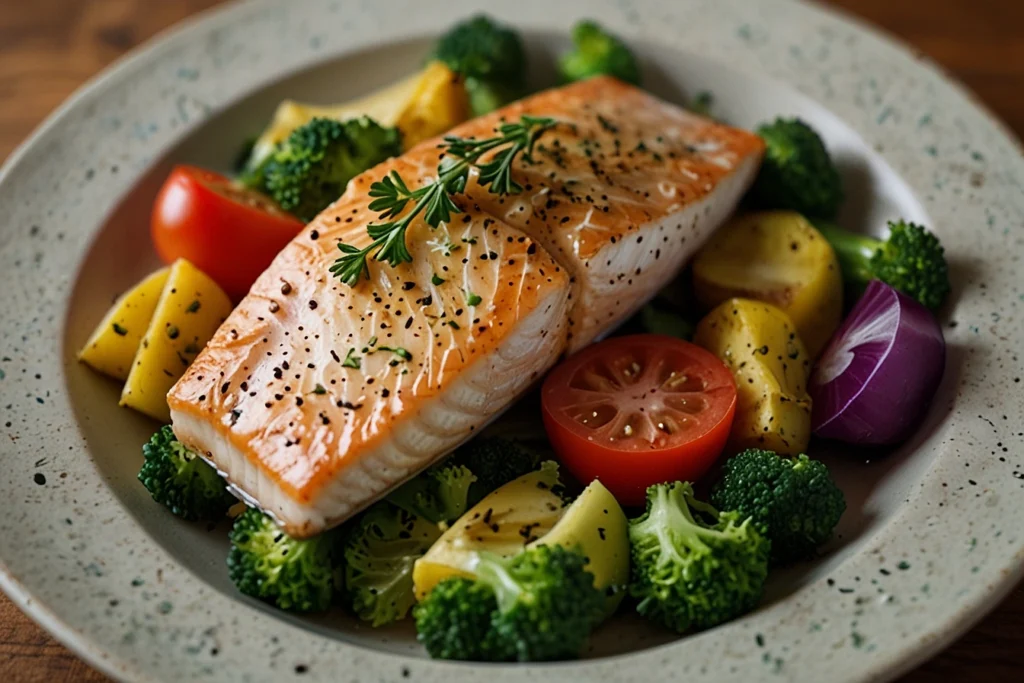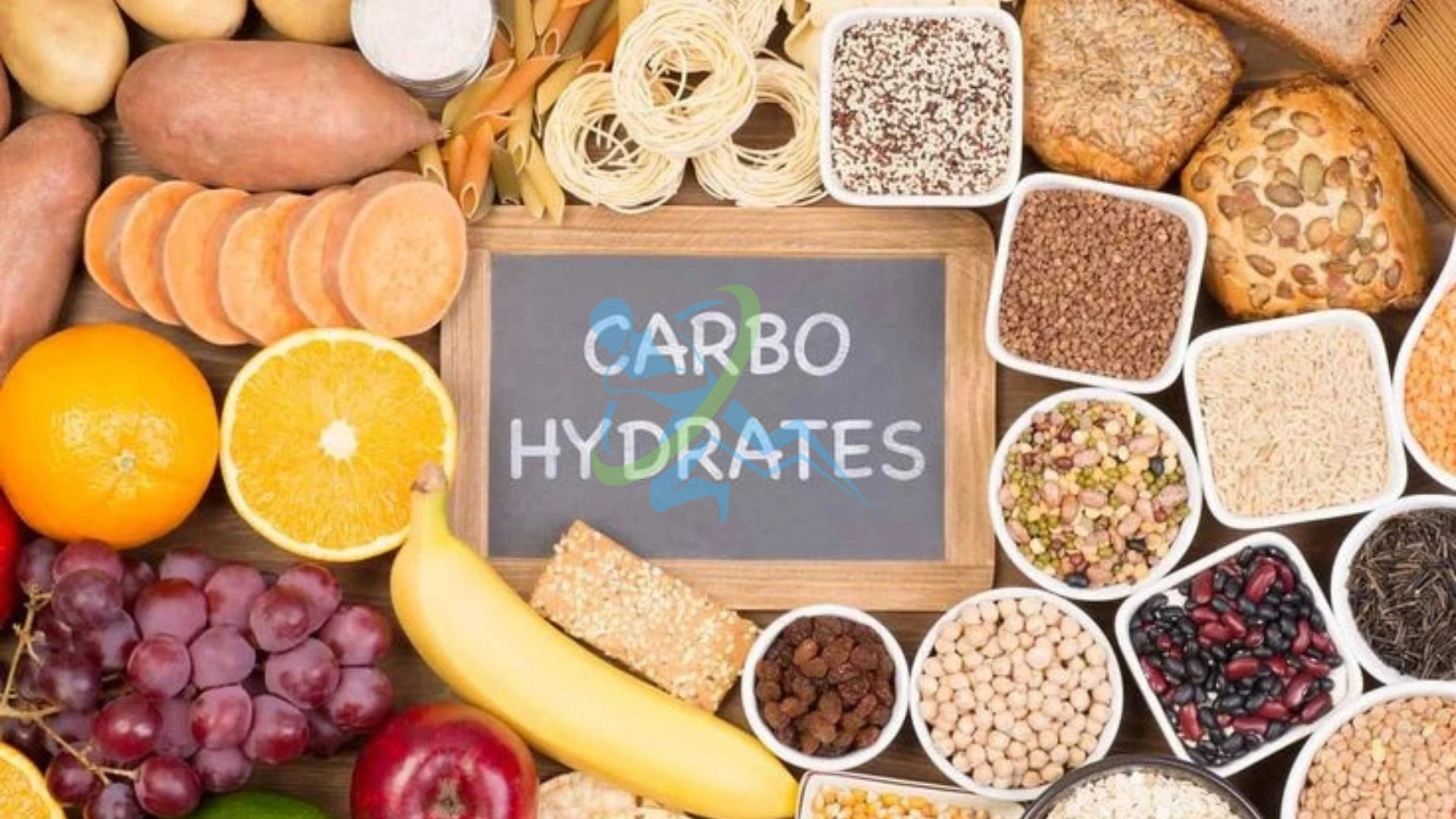Healthy eating starts in the kitchen, but the process of preparing nutritious meals can often feel overwhelming, especially for those with busy schedules. Between work, family commitments, and the temptation of quick, unhealthy options, finding time to cook balanced meals might seem like a challenge. However, it doesn’t have to be.
The good news is that healthy cooking doesn’t have to be complicated or time-consuming. By incorporating a few simple yet effective hacks into your cooking routine, you can save time, reduce stress, and enjoy delicious, wholesome meals without compromising on nutrition. Whether you’re a beginner in the kitchen or a seasoned home chef looking for ways to streamline your process, these hacks are designed to make healthy cooking more accessible and enjoyable.
In this post, we’ll explore five practical cooking strategies that will help you prepare meals smarter, not harder. From mastering meal prep and using smart cooking techniques to incorporating nutrient-dense ingredients and leveraging the power of modern kitchen gadgets, these tips will transform the way you approach cooking.
By the end of this article, you’ll be equipped with the tools and knowledge to whip up healthy, satisfying meals that fit seamlessly into your lifestyle. Say goodbye to takeout and bland, uninspiring dishes—let’s dive into the world of smarter, healthier cooking!
Hack 1 – Prep Like a Pro: The Power of Meal Prepping
Meal prepping is one of the most effective ways to stay consistent with healthy eating while saving time and effort. By dedicating a little time to preparing your meals in advance, you can ensure that you always have nutritious options ready, even on the busiest days. Here’s how you can master the art of meal prepping and make it a sustainable part of your routine:
1. Batch Cooking Basics: Save Time and Energy
Batch cooking involves preparing large quantities of food in one go and dividing it into portions for future meals. This method not only saves time but also minimizes the daily hassle of cooking.
- How to get started:
- Cook staples like whole grains (e.g., quinoa, brown rice) and proteins (e.g., chicken, tofu, beans) in bulk.
- Roast a variety of vegetables in the oven on a large baking sheet.
- Store each component separately in airtight containers for mix-and-match meals throughout the week.
- Benefits:
- Reduces cooking time during the week.
- Allows for quick assembly of balanced meals.
- Cuts down on food waste by utilizing ingredients effectively.
2. Invest in Quality Storage Solutions
The right storage containers can make meal prepping more efficient and keep your food fresh for longer.
- What to look for:
- Airtight glass or BPA-free plastic containers to maintain freshness.
- Portion-sized containers for easy grab-and-go meals.
- Freezer-safe bags or jars for storing soups, sauces, or smoothies.
- Pro tip: Label containers with the meal name and date to keep track of freshness and avoid confusion.
3. Plan a Weekly Menu
A well-thought-out meal plan helps you stay organized and reduces decision fatigue when it’s time to cook.
- Steps to create a menu:
- Choose recipes or meal ideas for the week based on your schedule and nutritional needs.
- Opt for versatile ingredients that can be used across multiple dishes. For example, roasted chicken can be used in salads, wraps, and soups.
- Incorporate a mix of proteins, carbs, and healthy fats for balanced meals.
- Why it works:
- Prevents last-minute unhealthy food choices.
- Simplifies grocery shopping by focusing on what you actually need.
- Encourages variety in your diet, keeping meals interesting.
4. Freeze Portioned Meals for Convenience
Freezing individual portions of meals or ingredients is a game-changer for those hectic days when you don’t have time to cook.
- What to freeze:
- Soups, stews, and casseroles.
- Pre-cooked grains like quinoa or rice.
- Chopped fruits and vegetables for smoothies or stir-fries.
- How to do it:
- Use freezer-safe bags or containers to store food. Remove as much air as possible to prevent freezer burn.
- Lay bags flat to save space in your freezer.
- Defrost meals overnight in the fridge or reheat them directly in a microwave or stovetop.
Meal prepping is a powerful tool to help you take control of your diet and reduce the stress of daily cooking. By planning ahead, investing in storage solutions, and making use of your freezer, you’ll always have healthy, home-cooked meals at your fingertips. Over time, meal prepping will become second nature, transforming your approach to healthy cooking and making your life easier in the process.
Hack 2 – Master Healthy Substitutions
Making healthy substitutions in your cooking is a simple yet powerful way to improve the nutritional quality of your meals without sacrificing flavor or satisfaction. By swapping out calorie-dense, processed ingredients for nutrient-rich alternatives, you can enjoy your favorite dishes guilt-free and with added health benefits. Let’s explore some practical and easy-to-implement substitutions that will transform your cooking.
1. Swap High-Calorie Ingredients for Healthier Alternatives
Many traditional recipes rely on ingredients high in calories, sugar, or unhealthy fats. Replacing these with healthier options can significantly improve the nutritional profile of your meals.
- Examples:
- Use Greek yogurt instead of sour cream for dips, dressings, and baked goods. It provides the same creamy texture with more protein and less fat.
- Replace heavy cream with unsweetened almond milk or coconut milk in soups, sauces, or desserts.
- Choose cauliflower rice instead of white rice to cut carbs and boost fiber intake.
- Benefits:
- Lower calorie count in meals.
- Increased protein and nutrient density.
- Enhanced flavor and texture with fewer unhealthy additives.
2. Choose Whole Grains Over Refined Carbs
Refined grains like white flour and white rice are stripped of their nutrients during processing. Opting for whole grains ensures you get more fiber, vitamins, and minerals in your diet.
- Healthy swaps:
- Substitute quinoa or brown rice for white rice in side dishes and stir-fries.
- Use whole wheat flour or almond flour instead of white flour in baking.
- Try whole-grain pasta or zucchini noodles as a replacement for regular pasta.
- Why it works:
- Whole grains help regulate blood sugar levels.
- They keep you fuller for longer, reducing overeating.

3. Replace Processed Sugars with Natural Sweeteners
Refined sugar adds empty calories to your meals and can contribute to weight gain and health issues. Natural sweeteners provide sweetness with added nutrients and lower glycemic impact.
- Options to try:
- Use honey, maple syrup, or agave nectar in place of white or brown sugar.
- Add natural sweetness with fruits like mashed bananas or unsweetened applesauce in baking recipes.
- Sweeten oatmeal or smoothies with dates instead of processed sugar.
- Advantages:
- Reduces the risk of sugar crashes.
- Adds vitamins and minerals from natural sources.
4. Experiment with Plant-Based Alternatives
Plant-based substitutions are excellent for reducing saturated fats and incorporating more nutrients into your diet. These options work well for those following vegetarian, vegan, or dairy-free diets.
- Ideas to try:
- Replace butter with mashed avocado or unsweetened applesauce in baked goods.
- Use nutritional yeast instead of cheese for a savory, cheesy flavor.
- Opt for plant-based milk (e.g., almond, oat, or soy milk) instead of dairy milk.
- Replace eggs in recipes with a flaxseed or chia seed mixture (1 tablespoon seeds + 3 tablespoons water).
- Health perks:
- Reduces unhealthy fats and cholesterol.
- Adds fiber, vitamins, and antioxidants.
5. Cut Back on Sodium with Flavorful Alternatives
Too much sodium can lead to health problems like high blood pressure. Instead of relying on salt, use spices, herbs, and other flavor enhancers to season your meals.
- Suggestions:
- Season dishes with fresh herbs like basil, cilantro, or parsley for bold flavors.
- Add acidity with a splash of lemon juice or apple cider vinegar instead of salt.
- Use spice blends, such as paprika, cumin, or turmeric, for depth of flavor.
- Incorporate umami-rich ingredients like miso paste, soy sauce alternatives, or nutritional yeast.
- Outcome:
- Enhanced taste without the health risks associated with excess sodium.
Mastering healthy substitutions is a skill that not only supports your wellness goals but also allows you to enjoy your favorite dishes in a more nourishing way. By making these swaps, you’ll improve the overall quality of your meals while exploring new flavors and textures. Start experimenting with these substitutions today to cook smarter, eat healthier, and feel your best!
Hack 3 – Use Smart Cooking Techniques
Healthy cooking isn’t just about the ingredients you use—it’s also about how you prepare them. Smart cooking techniques can help preserve nutrients, enhance flavors, and reduce the need for unhealthy additives like excessive fats or salts. With a few tweaks to your cooking methods, you can create delicious, nutrient-rich meals that support your health goals. Let’s explore some practical and effective techniques.
1. Embrace Steaming and Roasting for Better Nutrient Retention
The way you cook your food directly impacts its nutritional value. Steaming and roasting are two techniques that preserve nutrients while keeping your meals flavorful.
- Steaming:
- Ideal for vegetables, fish, and even some grains.
- Preserves water-soluble vitamins like vitamin C and B vitamins, which are often lost during boiling.
- Requires little to no added fat, making it a healthier option.
- Use a bamboo steamer, electric steamer, or even a simple steaming basket.
- Roasting:
- Perfect for vegetables, lean proteins, and even nuts.
- Enhances natural sweetness and creates a satisfying caramelized flavor.
- Use olive oil or avocado oil for light drizzling, and season with spices and herbs.
- Roast at high temperatures (around 400°F/200°C) for a crispy, golden exterior while maintaining moisture inside.
2. Try Air Frying for a Healthier Crunch
Craving crispy, fried foods but want to avoid the extra calories and unhealthy fats? Air frying is your answer.
- How it works:
- Air fryers use hot air circulation to cook food, requiring little to no oil.
- Achieves the same crispy texture as deep-frying with significantly fewer calories.
- Works well for items like sweet potato fries, chicken tenders, or even roasted chickpeas.
- Benefits:
- Reduces fat content by up to 75% compared to traditional frying.
- Retains more nutrients and uses minimal oil for cooking.
3. Master One-Pot and Sheet-Pan Cooking
Busy schedules can make cooking feel like a chore, but one-pot and sheet-pan meals simplify the process while delivering balanced, flavorful dishes.
- One-Pot Cooking:
- Combine grains, proteins, and vegetables in a single pot or skillet.
- Examples: hearty soups, stews, stir-fries, or pasta dishes.
- Reduces cleanup and ensures all flavors meld together beautifully.
- Sheet-Pan Cooking:
- Arrange proteins and vegetables on a baking sheet, drizzle with olive oil, season, and roast.
- Great for meal prepping or quick dinners with minimal effort.
- Examples: roasted chicken and broccoli, salmon with asparagus, or tofu with mixed veggies.
4. Utilize Slow Cookers and Pressure Cookers
Modern appliances like slow cookers and pressure cookers make healthy cooking easier and faster, especially for busy individuals.
- Slow Cookers:
- Ideal for soups, stews, and braised dishes.
- Cook food at low temperatures over several hours, enhancing flavors and tenderizing ingredients.
- Perfect for meal prepping—start cooking in the morning, and your meal is ready by evening.
- Pressure Cookers:
- Cook food quickly by trapping steam, which raises the cooking temperature.
- Ideal for beans, whole grains, and tougher cuts of meat.
- Preserve nutrients by reducing exposure to high heat for extended periods.
5. Cook with Minimal Oil and Fat
While fats like olive oil and avocado oil are healthy, it’s easy to overuse them during cooking. Smart techniques help you limit oil usage without compromising taste or texture.
- Non-Stick Cookware:
- Allows you to cook with little or no oil, ideal for frying eggs or sautéing vegetables.
- Broiling and Grilling:
- Use these methods to cook proteins and vegetables with high heat, allowing natural fats to be rendered out.
- Deglazing:
- Add a splash of broth, wine, or citrus juice to your pan after sautéing to create a flavorful sauce without added fat.
6. Use Spices, Herbs, and Natural Flavors
Enhance the flavor of your dishes without relying on salt, sugar, or unhealthy sauces.
- Spices and Herbs:
- Use spices like cumin, paprika, turmeric, and coriander for depth of flavor.
- Add fresh herbs like basil, parsley, and cilantro for a burst of freshness.
- Natural Flavors:
- Incorporate ingredients like garlic, ginger, onions, or lemon zest to elevate dishes naturally.
Smart cooking techniques are the foundation of a healthy, efficient kitchen. By adopting methods like steaming, roasting, air frying, and one-pot cooking, you can enjoy flavorful, nutrient-dense meals that align with your wellness goals. These techniques not only simplify your time in the kitchen but also make healthy eating more enjoyable and sustainable. Start experimenting today, and you’ll soon discover how easy and rewarding smart cooking can be!
Hack 4 – Incorporate Nutrient-Dense Ingredients
Incorporating nutrient-dense ingredients into your meals is one of the simplest ways to boost their nutritional value without adding extra calories or unhealthy components. Nutrient-dense foods are rich in essential vitamins, minerals, and other beneficial compounds, making every bite count toward your health goals. Here’s how you can make your meals more wholesome and nutrient-packed with smart ingredient choices.
1. Prioritize Fresh, Whole Foods
Whole, unprocessed foods are naturally rich in nutrients and free from added sugars, unhealthy fats, and artificial ingredients.
- Examples include:
- Fruits and vegetables: Opt for a rainbow of colors to ensure a variety of vitamins and antioxidants. Examples: spinach, kale, bell peppers, blueberries, and sweet potatoes.
- Whole grains: Choose brown rice, quinoa, bulgur, or farro for fiber, B vitamins, and minerals.
- Lean proteins: Incorporate options like chicken breast, turkey, fish, and eggs, or plant-based proteins like beans, lentils, and tofu.
- Benefits:
- Supports better digestion and energy levels.
- Provides the nutrients your body needs to function optimally.
2. Add Superfoods to Your Dishes
Superfoods are ingredients known for their high concentration of nutrients and health-boosting properties.
- Top superfoods to consider:
- Chia seeds: Rich in omega-3 fatty acids, fiber, and protein; great for smoothies, puddings, or as a topping.
- Avocado: Packed with heart-healthy fats, potassium, and vitamins; use in salads, spreads, or smoothies.
- Turmeric: Contains curcumin, which has anti-inflammatory and antioxidant properties; used in soups, curries, or teas.
- Berries: Blueberries, strawberries, and raspberries are loaded with antioxidants and vitamin C; perfect for snacks or desserts.
- Why it works:
- Enhances the nutritional value of your meals without much effort.
- Adds unique flavors and textures to your dishes.
3. Sneak in Vegetables and Greens
Even picky eaters can benefit from more vegetables in their diet by cleverly incorporating them into meals.
- How to do it:
- Puree vegetables: Add pureed carrots, zucchini, or cauliflower to sauces, soups, or casseroles for a nutrient boost.
- Spinach in smoothies: Blend fresh or frozen spinach into fruit smoothies—it’s virtually tasteless and adds a dose of iron and vitamins.
- Cauliflower rice or mash: Swap out traditional rice or mashed potatoes with cauliflower alternatives for lower carbs and higher fiber.
- Zucchini noodles (zoodles): Replace pasta with spiralized zucchini for a lighter, nutrient-rich meal.
- Advantages:
- Boosts your daily vegetable intake.
- Adds fiber and vitamins to meals without overpowering flavors.
4. Opt for Healthy Fats
Not all fats are bad for you—healthy fats are essential for brain function, hormone production, and overall health.
- Healthy fat sources:
- Nuts and seeds: Almonds, walnuts, flaxseeds, and pumpkin seeds provide healthy fats, protein, and fiber.
- Oils: Choose extra virgin olive oil or avocado oil for cooking and dressings.
- Fatty fish: Salmon, mackerel, and sardines are rich in omega-3 fatty acids.
- Why they matter:
- Helps your body absorb fat-soluble vitamins like A, D, E, and K.
- Provides long-lasting energy and supports heart health.
5. Upgrade Your Snacks and Sides
Snacks and side dishes are great opportunities to sneak in more nutrient-dense ingredients.
- Better snack ideas:
- Trail mix: Combine nuts, seeds, and dried fruit for a portable, energy-boosting snack.
- Hummus and veggies: Pair colorful veggies like carrots, cucumber, and bell peppers with hummus for a fiber-rich snack.
- Greek yogurt with toppings: Add fresh fruit, chia seeds, and a drizzle of honey to plain Greek yogurt for a protein-packed treat.
- Healthier sides:
- Replace fries with baked sweet potato wedges seasoned with paprika and olive oil.
- Swap white bread for whole-grain toast topped with smashed avocado and a sprinkle of seeds.
- Serve quinoa, farro, or wild rice instead of refined grains like white rice.
6. Focus on Seasonality and Freshness
Seasonal ingredients not only taste better but are often more affordable and nutritious due to their freshness.
- Why choose seasonal produce:
- They have higher nutrient content because they are harvested at peak ripeness.
- Lower environmental impact and often cost less at local farmers’ markets.
- Adds variety to your meals, keeping them interesting and exciting.
- Seasonal examples:
- Spring: Asparagus, peas, and strawberries.
- Summer: Zucchini, tomatoes, and blueberries.
- Fall: Squash, apples, and kale.
- Winter: Sweet potatoes, brussels sprouts, and citrus fruits.
Incorporating nutrient-dense ingredients into your cooking doesn’t have to be complicated. By choosing whole foods, sneaking in vegetables, and embracing superfoods and healthy fats, you can significantly improve your diet without overhauling your routine. These small but impactful changes will not only elevate the nutritional value of your meals but also keep you feeling energized and satisfied throughout the day. Start experimenting with these ideas to make your kitchen a hub of health and wellness!

Hack 5 – Save Time with Kitchen Gadgets
Healthy cooking doesn’t have to be time-consuming or labor-intensive. With the help of modern kitchen gadgets, you can streamline meal prep, speed up cooking times, and make creating nutritious dishes easier and more enjoyable. From multi-functional appliances to small yet mighty tools, here’s how you can use kitchen gadgets to save time and effort while sticking to your healthy eating goals.
1. Invest in a High-Quality Blender
A blender is a versatile tool that can simplify the preparation of various healthy meals and snacks.
- What you can make:
- Smoothies packed with fruits, vegetables, and protein powders.
- Homemade nut butter using almonds, peanuts, or cashews.
- Healthy soups like creamy tomato or butternut squash blended to perfection.
- Dips like hummus, guacamole, or salsa.
- Time-saving benefits:
- Quickly processes whole foods into ready-to-eat forms.
- Reduces the need for multiple tools like food processors or mixers.
2. Simplify Meal Prep with a Food Processor
A food processor is your best friend for chopping, shredding, slicing, and mixing ingredients in seconds.
- Uses in healthy cooking:
- Shred vegetables like carrots and zucchini for salads or baked goods.
- Prepare cauliflower rice or vegetable purees in no time.
- Blend energy balls or protein bar mixtures.
- Make dough for healthier pizza crusts or whole-grain bread.
- Why it’s a must-have:
- Cuts prep time dramatically, especially for labor-intensive recipes.
- Ensures consistent results, whether you’re chopping, grating, or mixing.
3. Speed Things Up with a Pressure Cooker or Instant Pot
Pressure cookers, especially multi-functional models like the Instant Pot, are game-changers for preparing healthy meals quickly and efficiently.
- What you can do:
- Cook beans, lentils, and whole grains in a fraction of the time it takes on the stovetop.
- Prepare stews, soups, and one-pot meals with minimal effort.
- Steam vegetables and proteins for quick, healthy dinners.
- Benefits:
- Saves time on slow-cooking dishes, making them ready in minutes.
- Reduces the number of dishes you need, as it functions as a multi-cooker.
4. Get Creative with an Air Fryer
Air fryers are perfect for achieving crispy, fried textures without the unhealthy fats of traditional frying.
- Healthy dishes you can make:
- Air-fried veggies like Brussels sprouts, sweet potato fries, or zucchini chips.
- Lean proteins like chicken breast, fish, or tofu with minimal oil.
- Homemade snacks like roasted chickpeas or kale chips.
- Advantages:
- Uses little to no oil, reducing calories and fat content.
- Cooks food quickly and evenly, saving time compared to oven baking.
5. Use a Slow Cooker for Hands-Free Cooking
A slow cooker is ideal for preparing nutrient-dense meals with minimal active cooking time.
- Perfect for:
- Soups, stews, and chili loaded with vegetables, beans, and lean meats.
- Overnight oatmeal or quinoa porridge for healthy breakfasts.
- Meal prepping shredded chicken, pulled pork, or plant-based dishes.
- Why it’s time-saving:
- Set it and forget it—just add the ingredients, turn it on, and let it cook while you focus on other tasks.
6. Rely on a Spiralizer for Low-Carb Alternatives
A spiralizer is a handy tool for creating low-carb, vegetable-based alternatives to pasta and noodles.
- What to make:
- Zucchini noodles (zoodles) for a lighter take on pasta dishes.
- Spiralized sweet potatoes for a unique side dish.
- Cucumber spirals for refreshing salads.
- Benefits:
- Adds variety and creativity to your meals.
- Encourages incorporating more vegetables into your diet.
7. Don’t Overlook Small but Mighty Tools
Small gadgets can also make a big difference in speeding up healthy cooking.
- Examples of time-saving tools:
- Immersion blender: Perfect for blending soups and sauces directly in the pot.
- Mandoline slicer: Quickly and evenly slices fruits and vegetables for salads or chips.
- Garlic press: Minces garlic in seconds without the need for chopping.
- Citrus juicer: Extracts juice from lemons, limes, or oranges effortlessly.
- Why they’re helpful:
- Reduce prep time for specific tasks.
- Ensure consistent results for better presentation and flavor.
8. Keep Your Gadgets Organized for Maximum Efficiency
Owning kitchen gadgets is only helpful if you can access and use them easily.
- Tips for organization:
- Store frequently used tools in accessible areas, like on countertops or in top drawers.
- Group similar items together (e.g., cutting tools, blending tools) for faster access.
- Regularly clean and maintain gadgets to ensure they work efficiently.
- Outcome:
- Saves time hunting for tools, allowing you to focus on cooking.
Kitchen gadgets can transform your cooking experience, making it faster, easier, and more enjoyable to prepare healthy meals. From blenders and air fryers to slow cookers and mandoline slicers, these tools help you save time and energy while maintaining your commitment to nutritious eating. Invest in the right gadgets, and you’ll find that cooking smarter—not harder—becomes a sustainable habit that supports your healthy lifestyle.
Hack 5 – Save Time with Kitchen Gadgets
In today’s fast-paced world, cooking healthy meals can feel like a daunting task. Fortunately, the right kitchen gadgets can transform how you cook, making it faster, easier, and more efficient to prepare nutritious meals. By investing in the right tools, you can save time without sacrificing the quality or healthfulness of your dishes. Let’s explore how these gadgets can simplify your healthy cooking routine.
1. Revolutionize Your Prep Work with High-Quality Tools
Preparing ingredients often takes the longest time in cooking. By using tools designed for speed and efficiency, you can cut down prep time dramatically.
- Blenders and food processors:
- Uses: Quickly blend smoothies, soups, or sauces, and chop, shred or puree ingredients.
- Example: Make a green smoothie in seconds or prepare cauliflower rice effortlessly.
- Benefit: Reduces manual labor and allows for versatile cooking options.
- Mandoline slicers:
- Uses: Slice fruits and vegetables evenly and quickly.
- Example: Create uniform zucchini slices for lasagna or thinly sliced potatoes for a gratin.
- Benefit: Enhances presentation and consistency while saving time.
- Immersion blenders:
- Uses: Blend soups, sauces, and dips directly in the pot or bowl.
- Example: Puree a butternut squash soup in the same pot it was cooked in.
- Benefit: Reduces cleanup and speeds up blending tasks.
2. Speed Up Cooking with Multi-Functional Appliances
Multi-functional gadgets like pressure cookers and air fryers are game-changers for time-efficient cooking.
- Pressure cookers (e.g., Instant Pot):
- Uses: Cook grains, beans, stews, and proteins in a fraction of the time.
- Example: Prepare a lentil curry or quinoa in under 20 minutes.
- Benefit: Reduces cooking time for dishes that usually require hours.
- Air fryers:
- Uses: Achieve crispy, fried textures without using excessive oil.
- Example: Make air-fried sweet potato fries, tofu, or chicken tenders.
- Benefit: Cuts down on unhealthy fats while delivering fast, delicious results.
- Slow cookers:
- Uses: Prepare nutrient-dense meals with minimal active effort.
- Example: Toss in ingredients for a hearty vegetable stew in the morning and enjoy a ready meal by dinner.
- Benefit: Perfect for hands-free cooking and meal prepping.
3. Embrace Specialty Gadgets for Healthier Cooking
Specialized kitchen gadgets can help you create healthier versions of your favorite dishes while saving time.
- Spiralizers:
- Uses: Create vegetable-based noodles as a substitute for traditional pasta.
- Example: Make zucchini noodles (zoodles) or sweet potato spirals.
- Benefit: Increases vegetable intake and reduces carb consumption.
- Citrus juicers:
- Uses: Extract fresh juice from lemons, limes, or oranges quickly.
- Example: Add a splash of fresh lemon juice to salads or tea.
- Benefit: Provides a quick way to enhance flavors with minimal effort.
- Garlic presses:
- Uses: Mince garlic cloves efficiently.
- Example: Add freshly pressed garlic to sautés, dressings, or marinades.
- Benefit: Saves time compared to chopping garlic by hand.
4. Keep It Organized for Maximum Efficiency
Having the right tools is only helpful if they’re accessible and well-maintained. Proper organization can further save you time during meal prep and cooking.
- Organizational tips:
- Countertop storage: Keep frequently used gadgets like blenders and air fryers on your countertop for easy access.
- Drawer organization: Use dividers or bins to separate smaller tools like mandolines, citrus juicers, and garlic presses.
- Cleaning routine: Regularly clean and maintain your gadgets to ensure they work efficiently.
- Benefits of organization:
- Reduces the time spent searching for tools.
- Keeps your kitchen tidy and encourages frequent use of gadgets.
5. Make the Most of Multi-Tasking Gadgets
Invest in tools that serve multiple purposes to maximize efficiency and minimize clutter.
- Examples:
- Multi-cookers: Combine a pressure cooker, slow cooker, rice cooker, and steamer in one device.
- Food processors with attachments: Use slicing, shredding, and dough-making features in a single machine.
- Hand mixers with accessories: Whisk, blend, and knead with interchangeable attachments.
- Why it works:
- Reduces the need for multiple appliances.
- Saves both storage space and time during cooking.
6. Take Advantage of Technology
Modern kitchen gadgets often come with smart features that make cooking even more efficient.
- Examples of tech-savvy tools:
- Smart ovens: Use preset functions to cook meals with precision.
- App-controlled gadgets: Control multi-cookers, blenders, or coffee makers remotely via smartphone apps.
- Digital scales: Ensure accurate measurements for portion control and recipes.
- Benefits:
- Enhances precision and consistency.
- Allows for remote monitoring and control, freeing up your time for other tasks.
Saving time in the kitchen doesn’t mean compromising on nutrition or quality. By incorporating these smart kitchen gadgets into your routine, you can streamline meal prep, simplify cooking, and make healthy eating a sustainable habit. Start with a few essential tools and build your collection over time, focusing on gadgets that align with your cooking style and health goals. Cooking smarter, not harder, is the key to maintaining a healthy lifestyle in today’s busy world.
Cooking healthy meals doesn’t have to be overwhelming or time-consuming. By implementing smart strategies like using kitchen gadgets, mastering healthy substitutions, and incorporating nutrient-dense ingredients, you can make healthy eating more practical and enjoyable. These simple yet effective hacks not only save time but also empower you to take control of your nutrition, helping you maintain a balanced lifestyle even amidst a busy schedule.
The key takeaway is to cook smarter, not harder. With a little planning and the right tools, you can create delicious, wholesome meals that support your health goals without spending endless hours in the kitchen. Whether it’s preparing a week’s worth of meals in advance, swapping out calorie-dense ingredients for healthier alternatives, or leveraging multi-functional gadgets to speed up your cooking process, these tips are designed to simplify your journey toward better health.
Most importantly, remember that healthy cooking is a journey, not a destination. Start small, experiment with what works for you, and celebrate the progress you make along the way. Every little effort counts, and over time, these hacks will become habits that lead to lasting positive changes in your lifestyle.
So, take the first step today. Pick one or two hacks to try, stock your kitchen with the tools and ingredients you need, and set yourself up for success. You’ll find that cooking healthy meals can be not only manageable but also incredibly rewarding—both for your body and your mind.
Here’s to cooking smarter and living healthier!



